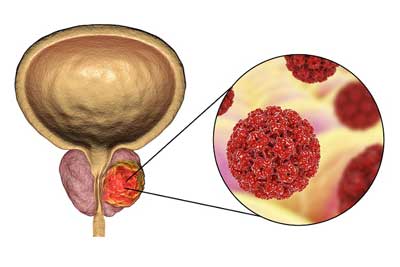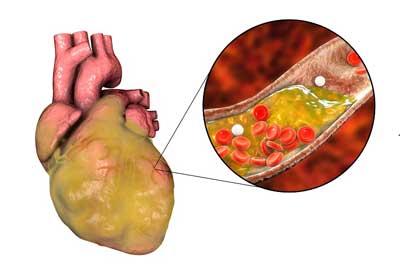The magnitude and speed of medical advances is good news for many people suffering from severe diseases, expediting diagnoses, improving treatment, and minimizing the impact on their lives and their families.
Insurers have a keen interest in tracking these advances and understanding the implications on protection products, such as Critical Illness (CI), that are specifically intended to protect people against the financial impact of severe disease. In response, new products are designed and enter the insurance market regularly.
There are times, however, where these two worlds overlap in a less symbiotic way; the wording of the insurance coverage that is created at a point in time and bought sometimes years before the insured event occurred, may not align with the latest diagnostic criteria. This can result in the insured feeling that the product they bought did not meet their expectations or the insurer paying unintended claims.
In this article we set out some of the most common challenges RGA has seen in regard to the Cancer and Myocardial Infarction definitions and consider how to prepare for and respond to these. It’s not a problem we will easily solve but through increased awareness we can work towards ‘future proofing’ definitions and adopting a reasonable approach when interacting with claimants caught up in the confusion.
Cancer
The advances in diagnostic techniques have been staggering as previously accepted grading and staging classifications have been enhanced with better screening methods and improved histological/genetic analysis. In addition, an improved understanding of the nature of many cancers has led to nomenclature changes and reclassifications of their malignant potential. It’s little wonder that an insurance-based definition of cancer cannot always neatly align with the hundreds of conditions that fall under this term, and the application of exclusions can be brought into question.
Here are a few examples:
 Thyroid cancers consist of two main types: Papillary Thyroid Cancer (PTC) and Follicular Thyroid Cancer (FTC). In the last 20 to 30 years, incidence of encapsulated thyroid tumors has risen two to threefold, now representing 10% to 20% of all thyroid cancers in Europe and North America1. These tumors generally have an indolent course and are regarded as having very low malignant potential2. Following limited surgery (removal of the affected lobe rather than the whole thyroid gland), they very rarely relapse or spread to distant sites. To avoid over-diagnosis and overtreatment, a new diagnosis of “non-invasive follicular thyroid neoplasm with papillary-like nuclear features” (NIFTP) was introduced for conditions that would previously have been diagnosed as cancer. The consequence of the WHO reclassification in 2017 is that tumors that would previously have been considered an invasive cancer are now diagnosed as NIFTP, and therefore excluded under most CI cancer full payment definitions.
Thyroid cancers consist of two main types: Papillary Thyroid Cancer (PTC) and Follicular Thyroid Cancer (FTC). In the last 20 to 30 years, incidence of encapsulated thyroid tumors has risen two to threefold, now representing 10% to 20% of all thyroid cancers in Europe and North America1. These tumors generally have an indolent course and are regarded as having very low malignant potential2. Following limited surgery (removal of the affected lobe rather than the whole thyroid gland), they very rarely relapse or spread to distant sites. To avoid over-diagnosis and overtreatment, a new diagnosis of “non-invasive follicular thyroid neoplasm with papillary-like nuclear features” (NIFTP) was introduced for conditions that would previously have been diagnosed as cancer. The consequence of the WHO reclassification in 2017 is that tumors that would previously have been considered an invasive cancer are now diagnosed as NIFTP, and therefore excluded under most CI cancer full payment definitions.
The following table sets out the WHO criteria distinguishing when a diagnosis of NIFTP should be made:
| Features that support a diagnosis of NIFTP | Features that exclude a diagnosis of NIFTP |
|---|
A well demarcated tumor with any of the following features: - Fibrous capsule
- Fully or partial encapsulation
- No capsule and is clearly delineated
| Invasion of: - Capsule
- Vessels
- Adjacent thyroid if there is no capsule
|
| Cell nuclei demonstrate papillary features | Absence of follicular architecture |
| | High grade features such as tumor necrosis and increased mitosis (defined as at least 3 per HPF). |
Important:
When determining the validity of a CI claim, assessors need to carefully consider the full histological findings, including the tumor and its surrounding capsule. The assessment of invasion is key, with less focus on clinical staging, unless lymph nodes or metastases are present. The outcome of any multidisciplinary debate along with details of the treatment undertaken will also be relevant considerations. |
Prostate Cancer
Four major changes in the classification of prostate cancer were made when the 8th edition of the American Joint Committee on Cancer Staging Manual was published in January 2018. This has caused challenges in cancer definitions that refer to clinical staging of prostate cancer, and for those that differentiate T2 cancers with a suffix e.g.T2a, T2b.
edition of the American Joint Committee on Cancer Staging Manual was published in January 2018. This has caused challenges in cancer definitions that refer to clinical staging of prostate cancer, and for those that differentiate T2 cancers with a suffix e.g.T2a, T2b.
The new guidance states that clinical staging should be determined by digital rectal examination (DRE) alone. This has the benefit of promoting global uniformity of diagnostics as not all geographies routinely have access to more sophisticated techniques such as MRI scans. However, in some countries such as the UK, clinicians are increasingly relying on radiological investigations such as MRI and biopsies to clinically stage prostate cancer. This appears to be in response to the National Institute for Health and Care Excellence (NICE) guidelines published in 2019 that recommend multiparametric MRI as the first-line investigation for people with suspected clinically localized prostate cancer3. Some claims may therefore be presented with a clinical T2 stage in the absence of a positive DRE.
A new histologic grading system was also introduced in the 8th edition that may have an impact on definitions that require a numerical Gleason score. Grade groups are now proposed as outlined in the following table.
| Grade group 1 | = | Gleason 6 (or less) |
| Grade group 2 | = | Gleason 3 + 4 = 7 |
| Grade group 3 | = | Gleason 4 + 3 = 7 |
| Grade group 4 | = | Gleason 8 |
| Grade group 5 | = | Gleason 9 or 10 |
Important:
Claims assessors should be aware that histology reports in the future may refer to a Grade group. Only Grade group 2 and above are equivalent to a Gleason score greater than 6. Claims assessment practices should include clear guidelines on how to adjudicate claims in the absence of a DRE, including that the diagnosis needs to be confirmed through histological findings that correspond with MRI abnormalities and that a clinical T2 classification should be endorsed by a multi-disciplinary team. Where definitions stipulate a level of cover based on a suffixed T2 stage, assessors should be aware that these suffices are no longer a recommended element of prostate cancer staging. It would be unreasonable to insist that a claim be determined by a classification that is considered obsolete by treating clinicians. With this in mind, it is likely that insurers will have to carefully consider T2 tumors that would have previously been assigned a suffix which are now simply being staged as T2. |
Myocardial Infarction (MI)
 The insurance definition of MI has evolved over time in response to the medical profession having ever increasing sophisticated ways of detecting the extent and precipitating cause of death of heart muscle. This has led to events that would previously have been considered angina, or other cardiac diagnosis, to now be given a diagnosis of MI.
The insurance definition of MI has evolved over time in response to the medical profession having ever increasing sophisticated ways of detecting the extent and precipitating cause of death of heart muscle. This has led to events that would previously have been considered angina, or other cardiac diagnosis, to now be given a diagnosis of MI.
The main challenge with adjudicating MI claims arises where only heart attacks of specified severity are considered valid claims events. The principle of covering more severe events relies on the extent to which the heart muscle suffered permanent damage, acknowledging that the impact of this kind of event is more life changing and critical and therefore in keeping with the nature / purpose of CI cover. This is in contrast with clinical medicine where acute coronary syndromes include both heart attacks and unstable angina receiving similar medical management, even though the prognostic outcomes are quite different. Because of this mismatch, the claimant may have an expectation from the outset that ALL acute coronary syndromes (in layman’s terms “heart attacks”) are equal and warrant a benefit payment.
There are some further challenges – as the biological markers that define MI become ever more sensitive there is an increased clinical capacity to diagnose infarction very early and in circumstances where there is little cardiac damage. Severity based products provide some support for claims adjudicators in considering clinical evidence that may support a claim at a lower percentage pay-out. However, non-staged products traditionally only cover those more “severe” MI’s, with definitions containing higher biomarker cut offs and the requirement for severe permanent impairment of heart function.
Important:
Most comprehensive CI products will also include several other claimable events to provide cover for interventions such as angioplasty and coronary artery bypass graft or other clinical conditions such as cardiomyopathy. Claims assessors must ensure that they have deep knowledge of product coverage and analyze clinical evidence in detail to accurately match the event that is covered. Where a clinical diagnosis of “heart attack” does not meet insurance criteria, careful communication with the claimant is required to avoid the perception that the attending medical specialist's expertise or clinical diagnosis are being questioned. |
Management Strategies
There will never be perfect alignment in how medical evolution sits alongside the provisions of past and present insurance definitions, but insurers must respond in a versatile and practical manner, whilst meeting their contractual obligations to their claimants. The following actions may help achieve this outcome:
Industry minimum standards Industry associations in many life insurance markets issue standard definitions that set minimum criteria for a valid claim event. This creates consumer confidence for policyholders knowing that their insurance product, irrespective of
provider, will provide a reasonable level of cover. |
Collaboration with clinical professional bodies Working with clinicians associated with well-respected and recognized professional bodies to help set insurance definitions will provide credibility to insurance products. |
Management of the product life cycle Insurers should regularly review and update their CI definitions to ensure that they reflect appropriate and relevant clinical practice. A regular feedback loop with the claims team should be established and embedded as usual practice.
This establishes a channel to receive insights from their practical adjudication experience that can be applied to new product design, creation of definitions and help create accurate pricing. |
Claims expertise The assessment of very complex and technical medical information should be handled by experienced claims adjudicators. They must have a deep understanding of the claim triggers and be able to understand where the information presented
deviates from claim requirements. Closely working with chief medical officers (CMO’s) is crucial, especially where there is any uncertainty over the claims criteria being met. |
Tiered benefits Providing cover for a wide range of events that have a serious impact on health is the purpose of CI cover. This may include paying for events at less than 100% because their effects may not be as severe as another event within the same
category / diagnosis. However, potential conflict may arise where some less-severe events “top up” to 100% challenging the nature of the product and therefore creating an opportunity to argue that other less-severe events
that are not covered at all, should be admitted for a benefit payment. |
Communication with policyholders Communication to policyholders on these reviews and the implications it holds for them is important. Where material changes are made that have an impact on premium and cover, policyholders should be given a timely opportunity to consider
and act on this. |
Communication with claimants The nature and timing of communication with a claimant when their claim is deemed to be not valid is crucial. The claims adjudicator should communicate the decision in an empathetic but confident manner. A deep knowledge of the claim events
and evidence considered needs to be shared with a clear explanation of why this does not meet policy terms and conditions. A template-like, written letter is not recommended, claimants will expect a conversation about their personal
experience, and will have many questions that cannot be addressed through a letter as the first manner of communication. Additionally, an adverse claim outcome should be communicated at the first appropriate opportunity. Delaying a
decision whilst the insurer may still be performing some administration activities should be avoided. |
Conclusion
For as long as CI products exist, insurers will be faced with the challenge of providing adequate cover of health events that have a severe impact on peoples' lives at a price that is affordable. This means that not all events can be covered, and those that are included in a product may not be covered at the same level of payout. For claims assessors, having knowledge of changes in medical practice is important, however it is the application of that knowledge to claimable events that is crucial. The management of this product requires collaboration between many different functions at the insurer from product design to claims handling and communication of adverse decisions. Policyholders should know that although this is a known challenge, insurers have practices and processes in place to manage these to the best of their abilities and resources.







